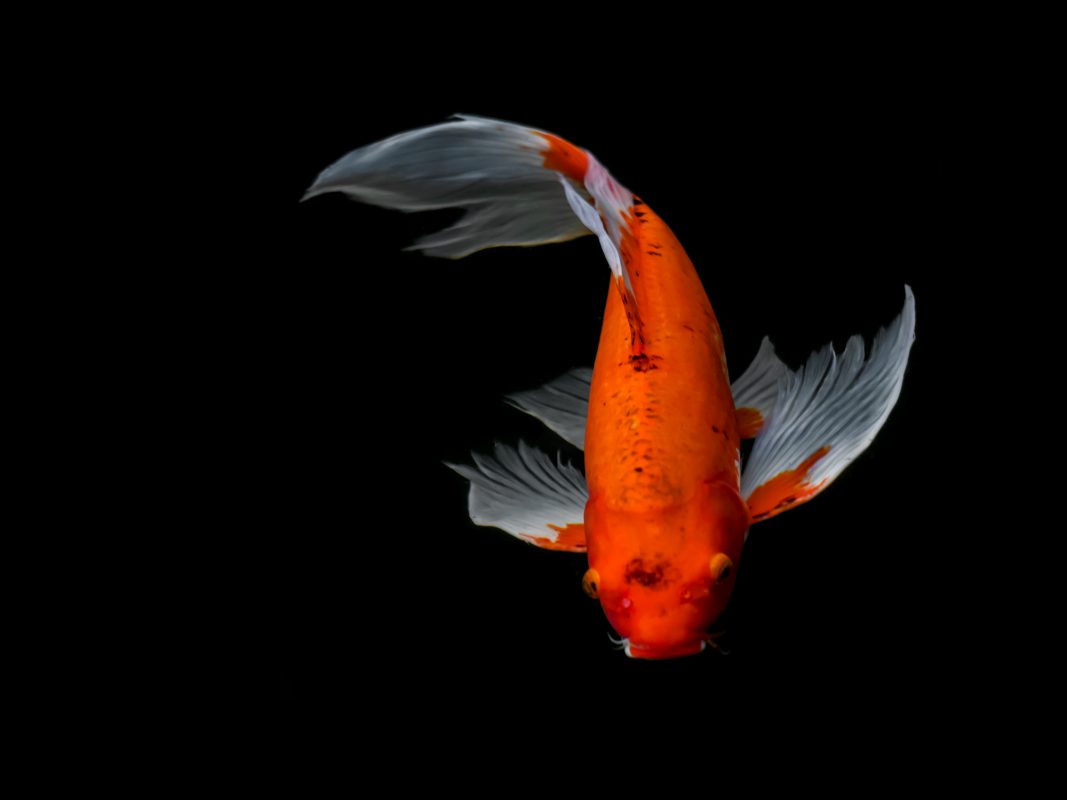There are four principal causes of disease in fishes in any habitat; environmental causes, infectious causes, those related to malnutrition or those that have been inherited. The two latter causes are significant and must not be ignored but are diseases that can be categorised as having either environmental or pathogenic causes that lead to the most notable fish diseases in garden ponds. In this article we shall focus on these two principal types of disease.
First off, what does an ‘environmental disease’ mean? Simply put, the environment the pond keeper has provided is failing to meet the environmental requirements of the fish which causes the animal to adapt a harmful stress response in order to cope with this sub-optimal environment. So what type of environment would pond fishes such as goldfish, koi, orfe or rudd prefer? Pond fishes require a water pH between 6 and 9, however it’s more important that the precise value itself is the stability of the pH value. The pH scale is not linear, each unit shift is a 10-fold change in acidity of the water and so what seems like a small variation on the pH scale can conceal a large change in pond water acidity. Carbonate and bicarbonate minerals in the water function to buffer the pH against change can be measured as the ‘carbonate hardness’ or KH. Therefore, when checking the pH is at a value in the water within the tolerances of the pond fish, we need to check that the KH value is above 4⁰dH, so there is a sufficient buffering capacity to keep that value stable. If the fishes are kept in water where the pH is too high or low, or fluctuates regularly – as can be seen in some ponds that are suffering from a bloom of algae – then we can expect the fish to be lethargic, covered in excess mucous, as well as show reddening of the skin and fins. Affected fish may also refuse to feed and might hang around filter outlets or waterfalls.
This latter behaviour is due to the slightly higher concentration of dissolved oxygen (DO), in this part of the pond. Wherever there is turbulence of the water surface, oxygen from the air should dissolve into the water. A pond fish’s requirement for DO is dependent on the temperature and for each 10⁰C rise in water temperature the fish’s oxygen demand can roughly double. Cruelly, warmer water can hold less DO than cooler water, making oxygen shortages a potential summer problem for many pond fishes. Again, affected fish will be lethargic, may refuse feed and will seek areas of the pond where the DO concentration is slightly higher. A DO concentration that equates to around 70% of the DO saturation point at the current water temperature should be striven for – especially in high summer.
If the DO level in the pond drops some other pond occupants can be seriously affected, specifically the nitrifying bacteria that convert the fish’s toxic waste ammonia into nitrite and then to nitrate. This process is oxygen dependant, so the nitrifiers need a constant supply of clean DO-rich water passing over them, otherwise toxic ammonia and nitrite can start to accumulate in the water to the detriment of the fishes. Considering the environmental preferences of the pond fish, an undetectable level of ammonia and nitrite is required, if either are detected in the water than a thorough investigation into why the nitrifying bacteria are not able to perform properly is essential. New, overstocked, and overfed ponds, as well as ponds with unmaintained filter systems and those following long power cuts are all susceptible to rises in the concentration of troublesome ammonia and nitrite. Fishes poisoned by these toxins show the same non-specific symptoms described above, making diagnosis of the problem by symptoms alone impossible. Water testing kits must be used but this doesn’t have to be a time consuming task. Tetra has made water testing and interpretation easier than ever by using 6in1 water test strips in conjunction with its free digital water test app which is available on both iPhones and Android. Not only does this provide quick results but also recommendations for next steps if needed.
If the environmental requirements of the pond fishes are not met then the fish will mount a stress response; a series of physiological processes coordinated primarily by stress hormones such as the corticosteroids. Long-term release of these hormones can have harmful effects on many facets of the immune system – the fish’s innate and acquired protection against pathogenic organisms.
There are many opportunistic pathogens that live in the pond with the fish, such as the ‘white spot’ parasite are obligate pathogens which can only survive by infecting host fishes. However, even in a population of healthy fishes, a minority of individuals will have a small burden of the parasite. Other pathogens such as the sessile peritrichs, and certain bacterial or fungal organisms usually live in the organic matter of the pond but can also live parasitically on weakened and wounded fishes.
Very often, when a pathogenic disease strikes there is usually some predisposing factor. Inappropriate water quality is often the root of the problem, though in the pond, seasonal changes in water temperature can also be to blame. In winter, when the water temperatures are below 10⁰C the fish’s immune system is mostly inactive, however most pathogens are inactive also. As the temperature rises in spring, pathogen activity increases though the immune system takes longer to catch up. This leaves a window of infection when the fish are vulnerable and so a preventative dosing of the pond with a broad spectrum antiparasitic such as Tetra MediFin can be very beneficial for the fish at this sensitive time of year.
Additionally ensuring the fish diet is optimal at this time is also vital. Tetra pond fish foods are supplemented with ingredients to enhance elements of the immune response better protecting the fish against infectious disease year-round.
Through monitoring and maintenance of good water quality, we can ensure the fish’s environmental requirements are met consistently. This prevents the fish becoming stressed which could make them more susceptible to opportunistic diseases. Though there are other causes of ill health, the majority of pond fish diseases can be kept at bay by following these simple rules.

